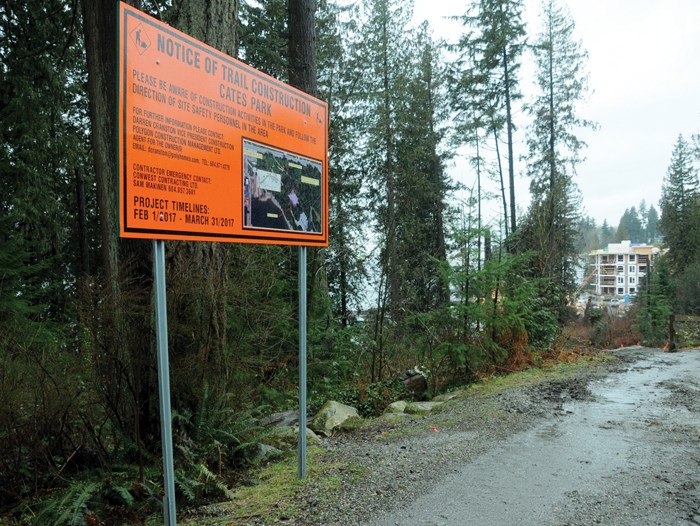Those of you who frequent the trails at Cates Park/Whey-ah-Wichen may have noticed that some work underway on the park’s western edge came to a rather sudden stop recently.
Polygon Homes had been working to connect existing trails from the park with the new waterfront walkway at their Cates Landing development. But work was halted abruptly when it was discovered that some unexpected neighbours had moved in.
A pair of bald eagles has taken up residence in a tree close to where Polygon was working. An observant resident spotted the nest while out enjoying the trails and reported it to us. District staff and Polygon’s environmental consultant responded and confirmed that there is indeed an occupied eagle nest there. Polygon stopped working and put their trail project on hold indefinitely because working near an active nest is prohibited under the B.C. Wildlife Act. Work can only resume once the eagles have fledged their young and leave their nest.
The Wildlife Act protects all birds while they are nesting. In fact, during the most active season for bird nesting, typically mid-March to mid-August, the District always makes sure there are no nests within its work sites. Anytime an active bird nest is discovered, no matter what time of year it is, work must stop. The regulations are slightly different when it comes to bald eagles. A subsection of the Wildlife Act protects them year-round, nesting or not. These regulations are crucial to protecting the wildlife we share our green spaces with.
It is quite unusual for eagles to nest in this type of urban setting; they are very particular about location when it comes to picking a place to call home. Eagles require a tremendous amount of space, they won’t nest near one another, and they need access to an abundant source of food.
That this spot in Cates Park/Whey-ah-Wichen provides this family of eagles with what they need to survive demonstrates that our ecosystem is doing well and is functioning as it should.
According to the province, the existence of raptors, such as bald eagles, is also a good indicator that there are low levels of contaminants in the environment.
I know many of you, like me, take great pleasure in being surrounded by nature, as we are here in the District. We are fortunate to have world-class parks and trails at our doorstep and in our backyards. But that good fortune comes with responsibility.
We are stewards of these lands and it is up to each of us to ensure we’re protecting them and our wildlife neighbours.



